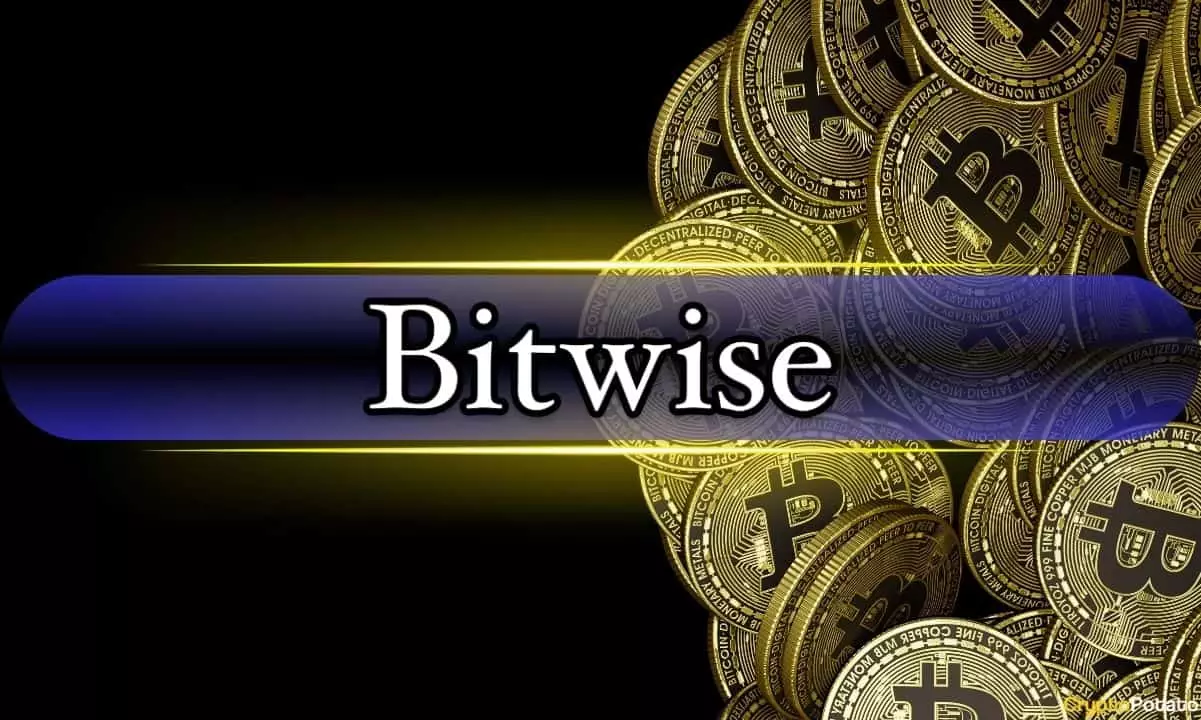Bitwise Asset Management has made noteworthy strides in the cryptocurrency investment landscape with its recent filing for a new exchange-traded fund (ETF) aimed at providing investors exposure to a carefully curated selection of ten prominent cryptocurrencies. This strategic move signifies the company’s ambition to widen its footprint in the growing digital asset market, particularly as ETFs emerge as preferred vehicles for both retail and institutional investors seeking to navigate the complexities of cryptocurrency investments.
The proposed ETF is structured around Bitwise’s existing 10 Crypto Index Fund, which features a blend of some of the leading cryptocurrencies: Bitcoin (BTC), Ethereum (ETH), Solana (SOL), XRP, Cardano (ADA), Avalanche (AVAX), Chainlink (LINK), Bitcoin Cash (BCH), Polkadot (DOT), and Uniswap (UNI). What distinguishes this ETF is its weighted allocation strategy, which reflects the varying market capitalizations and perceived value of each cryptocurrency. Bitcoin dominates the index with a staggering 75.1% allocation, followed by Ethereum at 16.5% and Solana at 4.3%. The other assets, including XRP, Cardano, and others, comprise smaller portions of the portfolio, suggesting a calculated effort to hedge risk while capitalizing on the potential upside of these digital assets.
The proposal has drawn the attention of the U.S. Securities and Exchange Commission (SEC), an entity known for its cautious and often stringent regulatory stance towards cryptocurrency products. While the SEC has acknowledged Bitwise’s application, there remains uncertainty regarding the timeline for a decision. This is indicative of a broader trend where regulatory scrutiny can substantially influence the speed at which new financial products are approved. To this end, Bitwise has taken precautionary measures by assuring that its trust’s assets will be constrained to the specified cryptocurrencies and cash holdings, explicitly distancing itself from any ownership of unregistered digital assets, which may increase the likelihood of receiving regulatory blessings.
Integral to the ETF’s operational framework is the allocation of custodianship and the method for calculating the net asset value (NAV). Coinbase Custody is tasked with overseeing the crypto holdings—an essential aspect considering the security risks associated with digital assets. Complementarily, the Bank of New York Mellon has been designated to manage cash reserves and act as the fund’s administrator and transfer agent. The reliance on reputable custodians and an established financial institution underscores Bitwise’s commitment to maintaining the integrity and safety of investor assets, which is crucial for building trust in this nascent market.
Bitwise’s momentum in the crypto sector is further evidenced by its ascension to over $10 billion in assets under management (AUM) within a remarkably short period. This impressive growth trajectory reflects both investor confidence and a burgeoning appetite for cryptocurrency exposure. Moreover, the company has been actively expanding its product offerings, including a recent initiative to rebrand its European XRP ETF and an application for a proposed Solana ETF—further diversifying its investment vehicle portfolio and catering to evolving market trends.
The recent political climate, including the potential reelection of Donald Trump and shifts in SEC leadership, has led to a burgeoning optimism in the cryptocurrency arenas. Industry experts suggest that these changes may catalyze an influx of ETF applications as market participants aim to capitalize on favorable conditions. Nevertheless, significant regulatory hurdles remain on the horizon, particularly for altcoin ETFs. Such complexities could impede the approval process, as highlighted by analysts who caution that maintaining compliance with regulatory frameworks is paramount.
Bitwise Asset Management’s proposal for a new crypto ETF exemplifies an innovative approach to enabling investor access to the digital asset economy. While there are promising indicators of market growth and evolving regulatory landscapes, the pathway to establishing these funds remains fraught with challenges. As the industry continues to mature, the balance between opportunity and compliance will determine which firms thrive in a competitive environment that is both exciting and uncertain.

